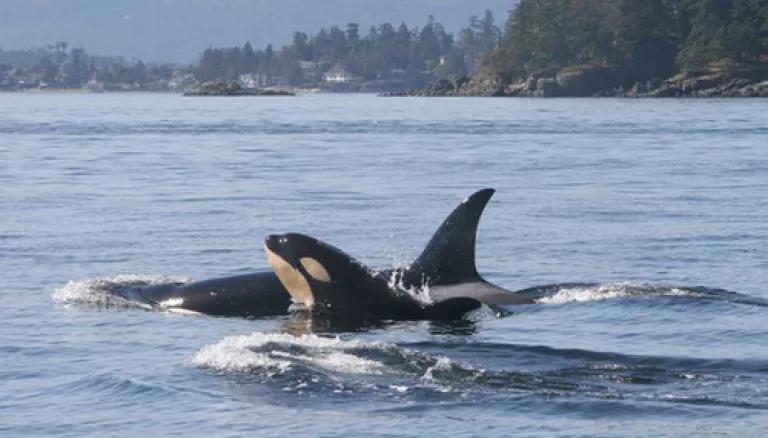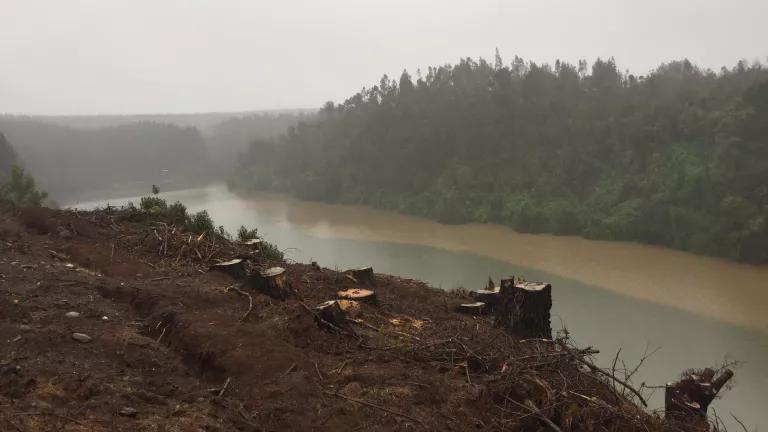
The EPA's Clean Power Plan is the U.S.'s biggest breakthrough yet on climate change. And, it's not just humans that will benefit from limiting carbon pollution, but whales too.
In many ways, the U.S. Government has a disappointing track record when it comes to helping whales, dolphins, and other marine mammals. Government agencies recently illegally authorized the Navy's harmful war games and gave the green light to oil companies to blast and degrade whale habitat while searching for oil and gas deep beneath the Atlantic and Arctic Ocean floors. But the EPA's Clean Power Plan bucks that trend. And make no mistake, climate change and other carbon pollution impacts like ocean acidification represent the biggest long-term threat to marine mammal populations around the world. So, when the US government sets national limits on carbon pollution from power plants - the biggest source of climate change pollution in the country - it will finally start to honor its obligation to leave future generations with a vibrant world, a world with oceans that can support whales, dolphins, seals, and walruses.
It is hard to predict the exact effects climate change will have on specific marine mammal populations around the globe. While they're obviously highly-adaptable species (their entire evolutionary history is an amazing tale of adaptation), the rate of carbon pollution-induced changes occurring now and projected to occur in the future have few precedents, impacting every facet of marine mammal lives and habitat: ocean temperatures, sea levels, ocean currents, sea-ice extent, ocean acidity, storm patterns, prey abundance and location, etc. Surely some marine mammals may benefit, at least in the short term, by some of these changes, but a close look at most populations reveals an unsettling list of changes that will be difficult, if not impossible, to survive.
For example, Pacific walruses are an ice-dependent species that has evolved to rely on Arctic sea ice as a resting surface between feeding dives, as well as for avoiding predators, birthing, and nursing. Climate change has led to reductions in Arctic summer sea ice. Walruses must now swim hundreds of miles back and forth to the coast to rest between feedings. This leaves walruses--especially baby calves--acutely and newly vulnerable. At the same time, decreased summer ice also has exposed the walruses to more open-water oil and gas activities. Shell Oil plans to drill in the Arctic this summer in the walruses' prime offshore feeding area. We are in court fighting hard to stop them.

Southern resident killer whales live off the coast of Washington, Oregon, and California and eat Chinook salmon. However, these incredible wolves of the sea are down to about 80 animals and on the brink of extinction. Why? One reason is that dams have decimated historic salmon runs, and the whales are starving. Climate change will only make things worse for the fish and the whales. As we are seeing already this summer--where the Pacific Northwest has experienced record temperatures--hot rivers cause fish kills, which will deplete our oceans even further of food for whales.
These are the conversations we need to have about climate change. We often talk of adapting to rising sea levels, increases in storm severity, and hotter days. We rarely talk about how we'll adapt to a world without some of our planet's iconic species. If the Clean Power Plan marks the start of an aggressive effort to curb US carbon emissions and similar efforts around the globe, maybe we won't have to adapt to that loss.
This post was written by Zak Smith and Giulia Good Stefani.



